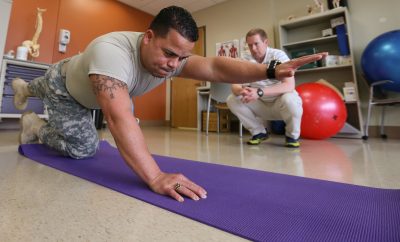 Image Courtesy of Nico Paix; License: (CC BY 2.0)
Image Courtesy of Nico Paix; License: (CC BY 2.0)
Cannabis in America
The New Drug Gaining Popularity in Nursing Homes: Marijuana Pills
When his father was dying of cancer in 1999, Daniel Reingold brewed a remedy that would not cure his fatal disease, but might alleviate his pain: marijuana-infused tea. Reingold, now the president and CEO of RiverSpring Health, later brought his first-hand experience with the medical properties of marijuana to a nursing home his company operates in the Bronx. The Hebrew Home, in Riverdale, allows its residents to find late-in-life relief from a leaf that doesn’t grow in the facility’s garden: marijuana, in the form of cannabidiol (CBD) pills.
As states continue to loosen the laws for marijuana use, the drug is reaching people who might have grown up in the age of “Reefer Madness.” Though marijuana use has shot up among all demographics over the past decade, use among adults ages 65 and up has increased exponentially. According to one recent study, between 2006 and 2013, marijuana use among people 65 and up has increased by 250 percent.
In some of the 28 states (and the District of Columbia) that have legalized marijuana for medical use, elderly residents of nursing homes and assisted living facilities can use marijuana pills in lieu of drugs like morphine. But at many of them, because the drug is banned at the federal level, the staff will not directly administer or oversee use, instead following a “don’t ask, don’t tell” policy. Residents can obtain cannabis products from a dispensary, and stow them away in their rooms. Some are worried that this is a health hazard, especially since the effects of marijuana on older people are far from understood.
“If residents are taking it, they are taking it undercover without the staff knowing so it’s not part of their care plan,” Dr. Cheryl Phillips, senior vice president for public policy and health services for a group that represents more than 2,000 nursing homes, told The New York Times. “I think that creates a safety problem.”
But for some residents at places like the Hebrew Home, popping a pill filled with cannabis oil is no different than using any other medication–aside from the stigma that comes with it. “It’s got a stigma,” Marcia Dunetz, 80, told the Times. “People don’t really believe you’re not really getting high if you take it.” Dunetz, a Parkinson’s patient, said since using marijuana she no longer wakes up with headaches, and feels less dizzy and nauseous.
Because marijuana is banned, in all capacities, at the federal level, staff at many assisted living facilities and nursing homes could theoretically be committing a crime if they were to administer marijuana to residents and patients. That possibility deters the staff and the owners wary of doing so. And at government-supported nursing homes, there is the possibility that Medicare and Medicaid could take a hit if the staff were giving their patients pot.
And then there is the great unknown of how marijuana affects older people. Should they consume less? Will it adversely affect their brains? “On the one hand, cannabis may be an effective substitute for prescription opioids and other misused medications; on the other hand, cannabis has emerged as an alternative for the undertreatment of pain at the end of life,” said a study published in January in the Oxford University Press.
Ruth Brunn, a 98-year-old with neuropathy living at the Hebrew Home, does not know what long-term affects taking cannabis oil pills will have on her (long-term has a different meaning for her, perhaps), but that doesn’t matter. “I don’t feel high or stoned,” she told the Times. “All I know is I feel better when I take this.”








Comments